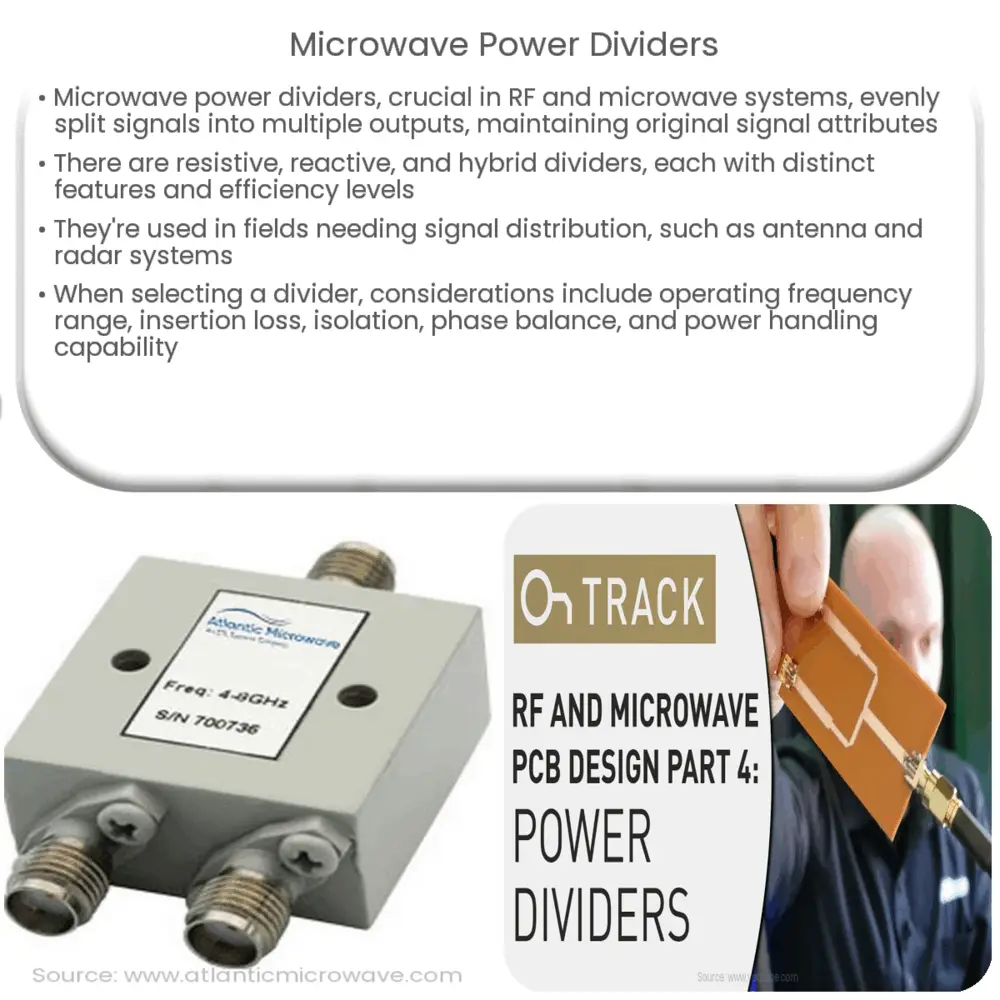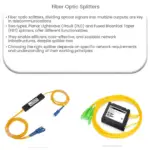Explore the functionality, types, and applications of microwave power dividers, and discover key factors to consider when selecting these crucial components.

Introduction to Microwave Power Dividers
Microwave power dividers, also known as power splitters, are vital components in RF (Radio Frequency) and microwave communication systems. They evenly divide an input signal into multiple output signals, while maintaining the characteristics of the original signal. Understanding their functionality, types, and applications can help in optimizing the use of such devices in RF and microwave systems.
The Functionality of Microwave Power Dividers
At the most fundamental level, a microwave power divider takes a microwave signal input and splits it into two or more outputs. These output signals can then be utilized independently in multiple channels of a communication system, radar, or other microwave applications. A key feature of a power divider is that it maintains the phase and amplitude of the input signal across all outputs, thereby ensuring signal integrity.
Types of Microwave Power Dividers
-
Resistive Power Dividers: As the name implies, these dividers utilize resistors to split the input signal. Though simple and cost-effective, resistive power dividers have the drawback of power loss, leading to less efficient operation.
-
Reactive Power Dividers: Reactive power dividers, including Wilkinson and Stripline dividers, use reactive elements like inductors and capacitors. They offer better performance than their resistive counterparts by minimizing power loss.
-
Hybrid Power Dividers: Hybrid power dividers, such as 3 dB hybrid couplers, offer an optimal balance of performance and power loss. These devices divide power equally with specific phase differences, making them ideal for certain specialized applications.
Applications of Microwave Power Dividers
Microwave power dividers find application in numerous fields where signal distribution is essential. They are commonly used in antenna systems, allowing a single antenna to be used for multiple outputs. Radar systems also leverage power dividers for signal splitting in different channels. Moreover, they are used in telecommunication and broadcasting systems, test and measurement setups, and other RF and microwave systems requiring power distribution. As technology evolves, their use continues to expand.
Factors to Consider When Selecting a Microwave Power Divider
When choosing a microwave power divider, several factors should be considered, such as operating frequency range, insertion loss, isolation, phase balance, and power handling capability. These aspects directly influence the performance and efficiency of the divider in a given application, making their selection a critical task.
Operating Frequency Range
The operating frequency range of a microwave power divider determines the range of frequencies at which it can effectively divide power. Some power dividers can function across a broad frequency range, making them versatile for different applications. Understanding the frequency requirements of the intended application is crucial when selecting a power divider.
Insertion Loss
Insertion loss refers to the loss of signal power resulting from the insertion of a device in a transmission line. In the context of power dividers, lower insertion loss means that more of the input power is delivered to the outputs, enhancing the overall system efficiency.
Isolation
Isolation is a measure of how well the output ports of a power divider are separated from each other. Higher isolation ensures that changes in one output do not affect the others, maintaining signal integrity across all channels.
Phase Balance
Phase balance is crucial for applications where the relative phase of the output signals is important. An ideal power divider maintains the same phase relationship across all outputs as was present at the input.
Power Handling Capability
The power handling capability of a microwave power divider determines how much input power the device can handle before it suffers damage or performance degradation. Power dividers used in high-power applications must have a higher power handling capability.
Conclusion
In summary, microwave power dividers are key components in RF and microwave systems, playing an essential role in signal distribution across multiple channels. They come in different types, each offering unique characteristics suited for different applications. Factors such as operating frequency range, insertion loss, isolation, phase balance, and power handling capability are critical to consider when selecting a microwave power divider. By understanding these factors and how they affect system performance, one can make informed decisions when integrating power dividers into their applications, thereby enhancing the overall efficiency and effectiveness of their RF and microwave systems.



